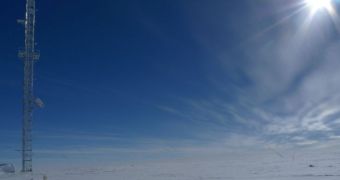The Soil Moisture and Ocean Salinity Satellite (SMOS), a part of the Living Planet Program operated by the European Space Agency (ESA), has been proven to produce data of the utmost sensitivity and precision. The validation efforts spanned that past two years.
In order to ensure if the advanced microwave technology aboard SMOS was indeed relaying correct data back to Earth, the team had to replicate all satellite measurements in Antarctica. The effort took quite some time to conclude, but its results are finally in.
The new investigation also looked at the microwave radiations the ice itself emitted. The goal in this section of the research was to figure out whether these characteristics were changing over time. The team was unable to find indications that this was indeed the case.

 14 DAY TRIAL //
14 DAY TRIAL //